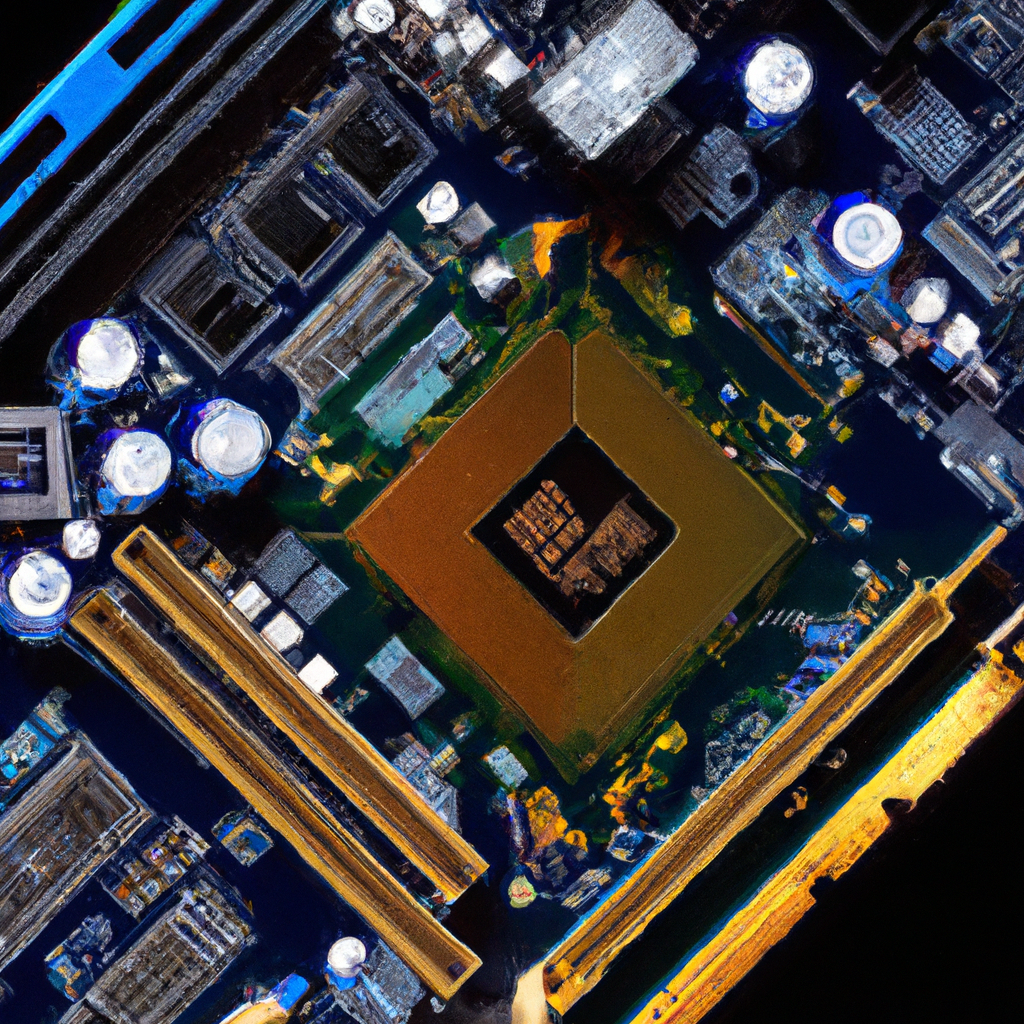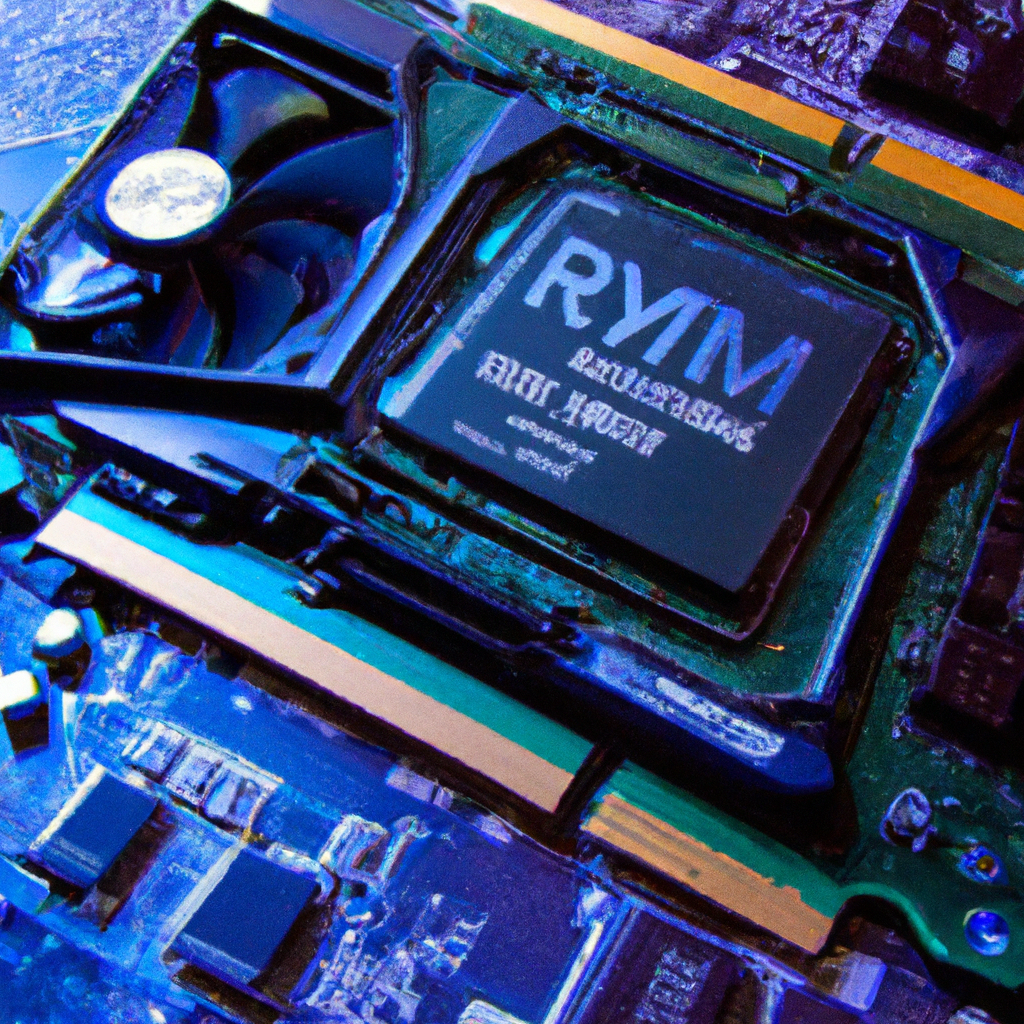What Is The Importance Of VRAM In Gaming? 10 Important Things You May Not Know
What Is The Importance Of VRAM In Gaming? Imagine being completely immersed in a virtual world, where every detail is so realistic that it feels like you’re actually there. This captivating experience is made possible by the powerful technology known as Virtual Reality (VR). But have you ever wondered what makes VR gaming so incredible? The answer lies in a vital component called VRAM. VRAM, or Video Random Access Memory, plays a crucial role in delivering stunning graphics and seamless gameplay. In this article, we will explore the question, “What is the importance of VRAM in gaming,” and how it elevates your gaming experience to new heights. So buckle up and get ready to dive into the world of VRAM!
The world of gaming has evolved in ways that once seemed like science fiction. From the pixelated landscapes of early arcade games to the photorealistic vistas of today’s virtual worlds, gaming has transcended mere entertainment to become an immersive experience that transports players to entirely new realms. Virtual Reality, or VR, represents the zenith of this evolution, allowing gamers to step into fantastical realms, battle fierce foes, and interact with a universe that exists only within the confines of code and imagination.
But what fuels this digital dreamland? What is the magic ingredient that transforms a computer or gaming console into a portal to these parallel universes? The answer, my friends, lies in a rather unassuming acronym: VRAM. Video Random Access Memory, abbreviated as VRAM, may not be the rock star of the gaming world, but it is undeniably one of its unsung heroes. VRAM’s importance in gaming is profound, and in the following pages, we’ll peel back the layers of this technological marvel to uncover the secrets of its crucial role in delivering the awe-inspiring graphics and seamless gameplay that make modern gaming such an enthralling experience.
Before we dive deep into the significance of VRAM in gaming, let’s take a moment to understand what VRAM is and how it fits into the broader landscape of gaming technology. VRAM is a specialized type of memory that is dedicated solely to handling the graphical data required by your computer or gaming console. Unlike your computer’s main system memory (RAM), which juggles various tasks, VRAM is a specialist, wholly focused on rendering the stunning visuals you see on your screen during gameplay.
Picture this: you’re in the midst of a high-stakes battle in a sprawling fantasy world. Dragons soar overhead, casting long shadows on the lush forests below, and the armor-clad hero you control moves with remarkable fluidity. The details are so vivid that you can almost feel the heat of the dragon’s fiery breath. This level of realism doesn’t happen by chance; it’s the result of meticulous design and powerful hardware working in harmony. And at the heart of this visual masterpiece is VRAM, tirelessly churning out the graphical data that paints this epic canvas.
To truly appreciate the importance of VRAM in gaming, we must first grasp its role in rendering these lifelike visuals. When you’re exploring virtual realms or engaging in intense firefights, your gaming device constantly needs to load and display textures, models, and other graphical elements in real-time. VRAM steps up to the plate as the high-speed storage for this graphical data, ensuring that your GPU (Graphics Processing Unit) can access and process it without skipping a beat. In essence, VRAM is the dedicated playground where all the graphical assets are stored and ready to be summoned into action at a moment’s notice.
The significance of this cannot be overstated. Without VRAM, your gaming experience would be akin to watching a slideshow of poorly rendered images. The seamless transitions, rich textures, and vibrant colors that modern games offer would be but a distant dream. It’s VRAM’s lightning-fast access to graphical data that makes the difference between a choppy, frustrating gaming experience and the breathtakingly smooth gameplay that keeps us coming back for more.
Intrigued? You should be! VRAM’s importance in gaming is the unsung hero of your immersive adventures, and as we delve deeper into the inner workings of this technology, you’ll gain a newfound appreciation for the role it plays in creating the virtual worlds you love to explore. So, join us on this journey as we uncover the mysteries of VRAM and reveal how it elevates your gaming experience to new heights. Prepare to be amazed by the invisible powerhouse that makes your gaming fantasies come alive, one pixel at a time.

What is the Importance of VRAM in Gaming: What is VRAM?
Definition
VRAM, or Video Random Access Memory, is a type of memory found in graphics cards. It is specifically designed to store and handle the data required for rendering and displaying images and videos on your computer monitor. In simpler terms, VRAM is responsible for storing the visual content that you see on your screen while gaming.
Function
The primary function of VRAM is to provide fast and efficient access to the graphical data required by the graphics processing unit (GPU) to render images and videos on your display. It serves as a temporary storage space that holds the textures, shaders, and other graphical assets needed for your games to run smoothly. VRAM acts as a buffer between the GPU and the main system memory, or RAM, to ensure a seamless flow of data during gameplay.
How Does VRAM Work?
Allocation
When you launch a game, the VRAM is allocated by the GPU to load and store the necessary textures, models, and other visual assets needed for the game to run. The allocation process is dynamic and occurs on the fly, based on the specific requirements of the game’s graphics settings and the available VRAM capacity. Higher graphics settings and more detailed textures require a larger allocation of VRAM.
Usage
Once the game is running, the GPU constantly accesses the VRAM to retrieve and process the required data for rendering in real-time. The textures and other assets stored in VRAM are used to create the images and videos that are displayed on your screen. The GPU reads the data from VRAM, performs calculations and transformations, and sends the final output to your monitor for display.
VRAM vs. RAM
Differences
While both VRAM and RAM are types of computer memory, they serve different purposes. RAM, also known as system memory, is responsible for running the operating system and applications on your computer. On the other hand, VRAM is specifically designed for the GPU and is optimized for handling and rendering graphical data. VRAM is much faster than RAM, which allows for real-time rendering and smooth gameplay.
Importance in Gaming
VRAM plays a critical role in gaming. It provides the necessary resources for the GPU to render high-quality visuals, textures, and effects. Without sufficient VRAM, the GPU would have to rely on the much slower system memory, leading to reduced graphics performance, lower frame rates, and potential gameplay issues such as stuttering and texture popping. In modern games, which require more VRAM due to their increased graphical complexity, having an adequate amount of VRAM is crucial for a smooth gaming experience.
Impact on Gaming Performance
Graphics Quality
One of the most significant impacts of VRAM on gaming performance is its influence on graphics quality. Higher VRAM capacity allows for higher resolution textures, more detailed models, and complex visual effects. With larger VRAM, the GPU can store and access these graphical assets without constantly swapping in and out of system memory. As a result, games with sufficient VRAM deliver more realistic and visually immersive experiences.
Frame Rate
VRAM also has an impact on the frame rate, which is the number of frames that the GPU can render per second. Insufficient VRAM can limit the GPU’s ability to store and access the necessary textures and graphical data, leading to lower frame rates. This can result in choppy gameplay, lag, and overall reduced smoothness. Adequate VRAM ensures that the GPU can quickly retrieve the required data, maintain a high frame rate, and deliver a fluid gaming experience.
Resolution
With higher VRAM capacity, gamers can enjoy gaming at higher resolutions. Increasing the resolution requires more VRAM to store the additional pixel information required for each frame. Without enough VRAM, the GPU may struggle to handle the increased workload, resulting in decreased performance and visual quality. For gamers who wish to play at 4K or ultra-high-definition resolutions, having ample VRAM is essential to avoid compromises in image quality and smoothness.

GPU Memory Bandwidth
Definition
GPU memory bandwidth refers to the speed at which data can be transferred between the VRAM and the GPU. It is measured in gigabytes per second (GB/s). A high memory bandwidth allows for quick data access, enabling the GPU to retrieve and process graphical data efficiently.
Importance in Gaming
GPU memory bandwidth directly influences the GPU’s ability to handle high-resolution textures and complex visual effects. With greater memory bandwidth, the GPU can retrieve more data from VRAM, allowing for faster rendering and improved overall performance. Higher memory bandwidth is especially crucial for demanding games or graphics-intensive applications, as it enables the GPU to keep up with the increased data requirements.
VRAM Size
Determining Factors
The appropriate VRAM size for gaming depends on various factors, including the resolution you intend to play at, the level of graphics detail you desire, and the specific requirements of the games you play. Generally, higher resolutions and more graphically demanding titles will require larger VRAM capacities.
Effect on Gaming
Insufficient VRAM can result in performance bottlenecks, where the GPU spends more time swapping data between the VRAM and system memory, leading to decreased performance and visual quality. Having an adequate amount of VRAM allows the GPU to store and access the necessary data efficiently, ensuring smooth gameplay, high-quality visuals, and reduced latency.

VRAM Overclocking
Benefits
Overclocking your VRAM can provide some benefits in certain situations. By increasing the clock speed of the VRAM, you can potentially achieve higher memory bandwidth and faster data transfer rates. This can result in improved performance, especially during memory-intensive tasks such as rendering high-resolution textures or applying complex visual effects.
Considerations
While VRAM overclocking can offer performance gains, it is essential to proceed with caution. Increasing the clock speed beyond the recommended limits can lead to stability issues, crashes, or even damage to the graphics card. Additionally, not all graphics cards support VRAM overclocking, so it is crucial to check the specifications of your specific GPU model and follow best practices to avoid any potential risks.
VRAM Technology Advancements
GDDR6 and Beyond
GDDR6 (Graphics Double Data Rate 6) is the latest VRAM technology that offers higher performance and bandwidth compared to previous generations. It provides faster data transfer rates, allowing for more efficient handling of graphics-intensive tasks. As technology continues to advance, future iterations of VRAM are expected to deliver greater capacities, faster speeds, and improved efficiency, further enhancing the gaming experience.
Future Impact on Gaming
The advancements in VRAM technology will likely have a significant impact on gaming. With faster and more efficient VRAM, games will be able to utilize more complex visual effects, higher-resolution textures, and more detailed models without sacrificing performance. As developers continue to push the boundaries of graphics, VRAM advancements will help future-proof gaming systems and ensure that gamers can enjoy cutting-edge visuals without compromise.

Balancing VRAM and Other Components
CPU
While VRAM is crucial for gaming performance, it is equally important to have a balanced system. The GPU and CPU work hand in hand to deliver a smooth gaming experience. A powerful CPU ensures that the game’s physics, artificial intelligence, and other non-graphics-related tasks are efficiently processed, while the VRAM and GPU handle the graphical aspects. A well-matched CPU-GPU combination ensures that neither component limits the overall system performance.
RAM
Although VRAM and RAM serve different purposes, having sufficient system memory is still important for gaming. While the GPU relies on VRAM to store and access graphical data, the system memory is responsible for running the operating system and background processes. Insufficient RAM can lead to system slowdowns and potential performance issues, even if the GPU has ample VRAM. Therefore, it is essential to ensure that both VRAM and RAM are adequately sized for optimal gaming performance.
Storage
While VRAM and RAM directly impact gaming performance, storage also plays a significant role. A faster storage solution, such as a solid-state drive (SSD), can reduce loading times and improve overall responsiveness during gameplay. Additionally, having enough storage space ensures that games and associated files can be stored without running into capacity limitations. In combination with sufficient VRAM and system memory, a well-balanced storage solution contributes to a smooth and enjoyable gaming experience.
Importance of VRAM for Virtual Reality (VR) Gaming
Immersive Experience
Virtual reality gaming places a high demand on system resources, and VRAM is crucial for delivering an immersive experience. VR games require rendering two separate perspectives simultaneously, which doubles the workload compared to traditional gaming. Ample VRAM is necessary to handle the increased graphical data and ensure that the VR headset can display a high-quality, lag-free, and realistic virtual environment.
Reduced Latency
Latency, or the delay between an action and its corresponding visual feedback, can be highly detrimental to the VR experience. Insufficient VRAM can lead to increased latency, as the GPU struggles to access and process the required graphical data in real-time. With enough VRAM, the GPU can quickly retrieve and render the necessary visuals, minimizing latency and providing a smooth and responsive VR gaming experience.
In conclusion, VRAM plays a vital role in gaming by providing the necessary resources for graphics rendering. It impacts graphics quality, frame rate, and resolution, directly influencing the overall gaming experience. The advancement of VRAM technology, such as GDDR6, promises even greater performance and visual fidelity in the future. Balancing VRAM with other components, such as the CPU, RAM, and storage, is crucial for optimal gaming performance. In the realm of virtual reality gaming, VRAM becomes even more important, as it enables an immersive experience and reduces latency. So, whether you’re a casual gamer or a VR enthusiast, having sufficient and capable VRAM is essential for maximizing your gaming enjoyment.
What Is The Importance Of VRAM In Gaming?: In A Nutshell
In conclusion, we have embarked on a fascinating journey into the heart of gaming technology, uncovering the pivotal role of VRAM, or Video Random Access Memory, in the immersive worlds we love to explore. Our exploration has revealed that VRAM is the unsung hero of gaming, tirelessly working behind the scenes to deliver the awe-inspiring graphics and seamless gameplay that define the modern gaming experience.
From the humble beginnings of pixelated landscapes to the breathtakingly realistic vistas of virtual reality, gaming has come a long way. This evolution has been driven not only by the creative minds behind the games but also by the relentless advancement of hardware technology. And in this technological tapestry, VRAM shines as a beacon of excellence, dedicated to one singular purpose: making the virtual world as vibrant, detailed, and engaging as possible.
We’ve seen how VRAM functions as a high-speed storage unit, providing the graphical data needed by your GPU to render lifelike textures, models, and environments in real-time. Without VRAM, the gaming experience would be reduced to a stuttering, pixelated mess, far from the immersive adventures we cherish today.
As we wrap up our exploration of VRAM’s importance, it’s important to emphasize that the gaming industry continues to push the boundaries of technology. With each passing year, VRAM capacity and efficiency are increasing, ensuring that gamers can enjoy ever more stunning and realistic experiences. But VRAM is not just about making games look better; it’s about deepening our connection to the virtual worlds we inhabit, making them feel more alive and tangible.
In the grand tapestry of gaming, VRAM is a thread that binds the player to the game, weaving together the sights, sounds, and interactions that define our gaming experiences. It’s the unsung hero that deserves recognition for its integral role in shaping the future of gaming.
So, the next time you embark on a gaming adventure, take a moment to appreciate the unassuming VRAM silently working in the background. It’s the reason dragons breathe fire, heroes wield magic, and galaxies await your exploration. VRAM is the bridge between reality and imagination, and it continues to propel the gaming industry into uncharted realms of possibility.
As technology marches forward, VRAM will remain at the forefront, ensuring that the virtual worlds we explore become even more immersive, astonishing, and unforgettable. The importance of VRAM in gaming is not just a technological detail; it’s a testament to human ingenuity, creativity, and our insatiable desire to push the boundaries of what’s possible in the world of gaming. So, as you fire up your gaming rig or console for your next adventure, remember to tip your hat to VRAM, the unsung hero that makes it all possible.





